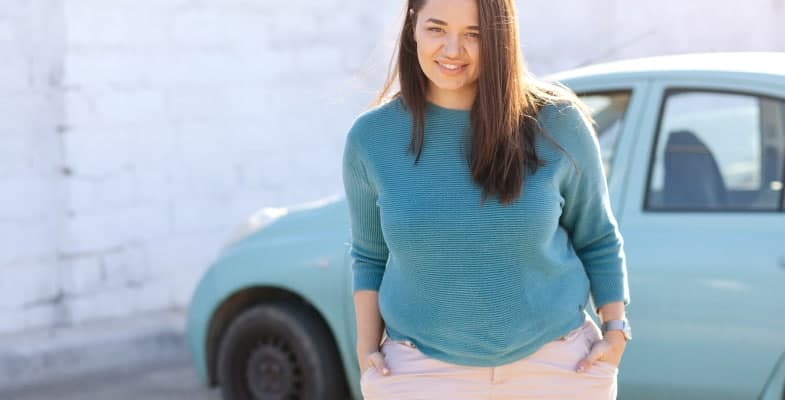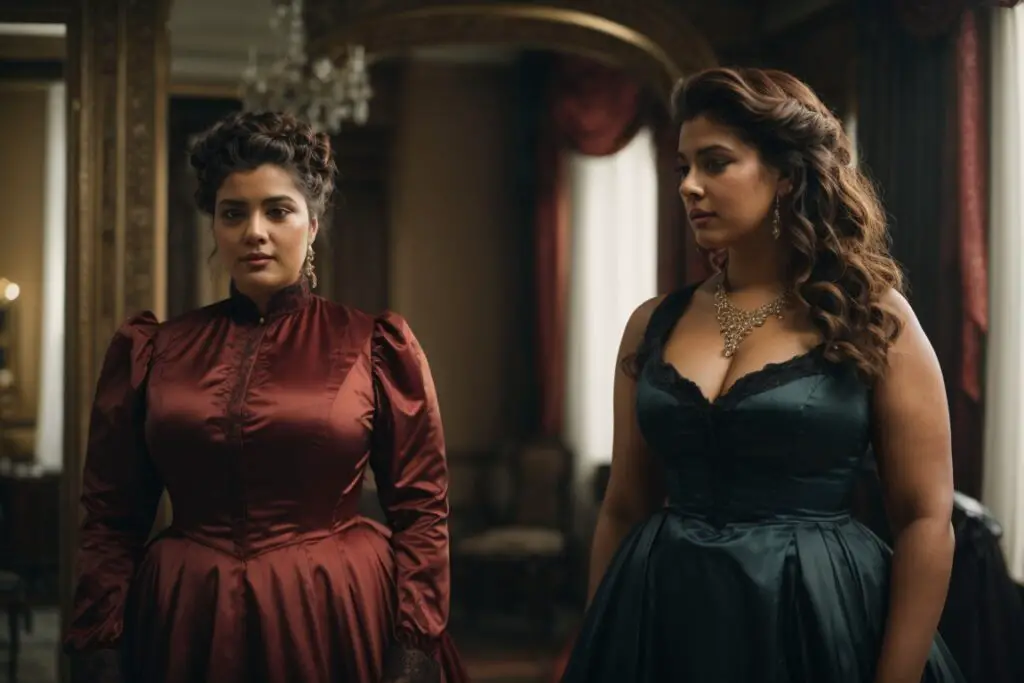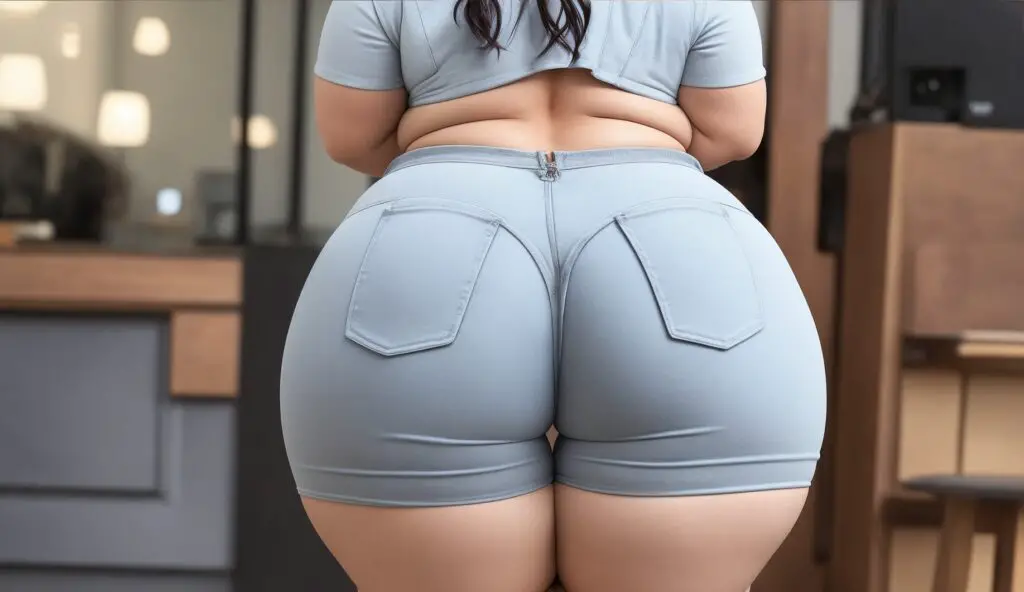For some women, fitting into plus-size clothing can be one of their worst nightmares because to them, it means they’ve become fat. Yet other ladies that wear plus sizes are just bigger in certain areas and not overly chubby. That has you curious, are the terms plus size and fat synonymous?
Plus size does not always mean fat. Since a plus-size woman is around a size 14, she’s definitely a bit bigger. However, depending on her figure and her weight distribution, she may have a curvier shape rather than one that people consider fat.
We know this can be a sensitive topic, and while we’ll tread lightly, we want to provide as much information as we can about whether being plus size is the same as being fat. Make sure you keep reading, as this article is can’t-miss!
What Does It Mean to Be Plus-Sized?
We recently published a post on the blog about what it means to be plus-size. If you missed that, we recommend you go back and read it, but we’ll sum up all the most pertinent points for you here.
The plus-size terminology was created by the fashion industry to sell clothes. That’s the simplest definition.
What constitutes a plus-size woman varies, but it’s generally agreed upon that she’s at least a size 12, more commonly a size 14 and up. It’s practically impossible to say, “well, a size 14 woman has these measurements” because here’s the thing. What one plus-size retailer calls a size 14 is a size 16 to another retailer.
If you always buy Dia & Co. clothes in a size 16 but today you’re shopping at Lane Bryant with some girlfriends and none of their clothing in the same size fits you, that’s exactly why.
As you can imagine, this makes things really confusing for a woman who’s just trying to shop for clothing. Sizing disparities are not only an issue that plus-size ladies face, but smaller women as well. We’d go so far as to say that women of all sizes probably deal with it.
The best information you can have when buying clothes of any size, especially plus sizes, is your measurements. That’s right, the size of your breasts, hips, and waist. This will come in handy far more than some size number that doesn’t apply to all brands.
Further compounding matters is the plus-size modeling industry, which we wrote about last week. In a model’s world, if you’re a size 0 but have big breasts, you may be considered plus size. You’re definitely a plus-size model if you’re a size 8.
What this means is that most of the plus-size models we see strutting their stuff on runways and appearing in magazines and advertisements are not actually plus size.
Sure, lots of advertising is fraudulent. That mouthwatering meal you see advertised in a photo is tacked together with glue and sprayed with gloss so it looks amazing. You can know that, but it doesn’t change the visceral reaction you have when you see the ad. You start to feel your tummy rumbling.
You’ll also have a visceral reaction when looking at plus-size model ads. You know the model probably isn’t truly plus-sized, and that even if she was, she’s Photoshopped to oblivion. Yet still, you see the model and instantly start playing the comparison game between your body and hers. You always lose that game because you’re a real woman and her, in that exact appearance, isn’t.
Does Plus Size Mean Fat? Not Necessarily!
If you didn’t bother to research food advertising, you might not know there are professionals who dedicate themselves to making food look as appealing as possible through inedible means (they’re called food stylists). Just like if you didn’t dig deeper into the plus-size modeling industry, you would assume that since those ladies are modeling plus-size clothing that they themselves must be plus size.
This creates an impression among the general public that plus-size women must look a certain way. They should have bigger breasts and hips but their arms and bellies must be proportionate to the rest of them. None of this is surprising considering that beauty standards prevail no matter how much you weigh.
These standards are very damaging, as now when a person sees a real plus-size woman, they think she’s fat because she doesn’t look like the models.
So is it true? Are all plus-size women fat? Not at all! Here are some factors that can make two women who are both a size 14 look drastically different from one another.
Height
Take a look at this photo from an article that appeared on the UK news site The Sun. It shows four women of varying heights side by side.
What do the women have in common? Yes, they’re all wearing the same outfit, but it’s something more than that.
All four of those women pictured are a size 16. Seriously!
Now that you know that, study the photo more closely. We don’t mean to insult any of the women, but which of the four looks fattest in your opinion? The first woman does, right? Maybe the second woman too, but not quite as much.
Did you notice something else about those two women? They’re also the shortest of the four.
Although it’s considered horribly inaccurate by many, including some experts, the body mass index or BMI uses your height as a reference to your weight. In other words, you’re supposed to weigh X amount for your height.
That’s why the third woman has a rather curvy figure and the fourth one is about average-sized. They’re taller, so their weight looks better on their bodies for their respective statures.
Weight Distribution
Another factor that comes into play is a woman’s weight distribution, which we discussed in our article about what a plus-size woman is. If you remember from that post, we talked about how the way your weight is distributed isn’t necessarily something you can influence.
Exercise can help to a degree, but even if you train certain parts of your body, you don’t lose weight in those areas specifically. If that was true then diet companies would be nonexistent! Instead, when you lose weight, it’s often more uniform, even if you only gain weight in certain areas.
Weight distribution and height are definitely related, and it only takes looking at that picture of the four women to see how.
Body Shape
Besides your height and weight distribution, your body shape can also make you look larger or smaller. Here is a run-down of all the various shapes a woman’s body may most closely resemble.
- Rectangle: With a rectangle body shape, you have more straight lines than curvy ones throughout. Your waist will be boxy and about the same width as your hips while your shoulders are flat and squared.
- Inverted triangle: Women who fit the inverted triangle shape have slimmer hips and wider shoulders.
- Hourglass: Considered the best type of body by many, an hourglass features a defined and curvy middle, large breasts, round shoulders, and wider hips.
- Pear: The pear-shaped body type resembles the fruit, meaning you’re bottom-heavy. This is the opposite of an inverted triangle, so your shoulders are narrower and your hips wider.
- Apple: The apple shape is similar to the pear, but with less waist definition (since apples are wider than pears). This is also referred to as the round body shape, as your body is more circular overall if you’re this shape.
Yes, we’re going back to the picture of the four size-16 women once again here. The first woman in the photo who’s the shortest is maybe an apple shape but could be a pear shape. Her shoulders are round but so is her mid-section as well as her hips, with no real definition from one part to the other.
The second woman is an inverted triangle. Her hips are a bit on the narrower side but her shoulders are wider. Her mid-section is more defined than the first woman’s but still doesn’t have that much definition (at least not that we can see in that outfit!).
The third woman has a rectangular shape, as she’s rather narrow and boxy. The fourth woman in the photo, we would say, boasts the beloved hourglass shape. Her midsection has more definition, her shoulders are round, her hips are large, and her chest is on the bigger side too.
If you’re an apple shape or a pear shape, you carry your weight differently than an inverted triangle or hourglass. That can even be the case if you all wear the same clothing size or weigh about the same.
Yet the fourth woman in the photo would probably not be classified as fat using BMI standards although the first one definitely would be and the second and third might.
How Much Does the Average Plus-Size Woman Weigh?
All this talk about BMI has you wondering something. What is the weight of an average plus-size woman?
Well, you have to remember, there is no such thing as an average plus-size woman. Keeping that in mind, Byrdie cites data from the Centers for Disease Control and Prevention or CDC that uncovered that today’s average woman who’s more than 20 years old weighs 170.5 pounds on average.
A woman at that weight is probably plus-sized, but recalling the factors we discussed in the last section, she might not be.
If you’re curious how much an average woman weighs compared to a plus-size model, we have that information too. FindAnyAnswer, according to 2020 numbers, lists the heights and weights for some of the most popular plus-size models. Here’s the list:
- Bishamber Das – 5 feet, 8 inches and 242 pounds
- Candice Huffine – 5 feet, 11 inches and 203 pounds
- Tara Lynn – 5 feet, 9 inches and 216 pounds
- Ashley Graham – 5 feet, 9 inches and 201 pounds
- Melissa Aronson – 5 feet, 11 inches and 190 pounds
Surprisingly, all those women weigh more than 170.5 pounds. Perhaps there is some hope for the plus-size modeling industry yet!
Are Plus-Size Women the Majority Today?
Racked, in an article from the same year the CDC data came out, talks more about what today’s average American woman looks like. She’s 5 feet, 3 inches tall, so a good deal shorter than the plus-size models we covered in the last section.
Her waist circumference is 38.1 inches and she’s 168.5 pounds, which is about in-line with the CDC data. The clothing size of the average American woman? Between 16 and 18.
The article mentions a figure from market research firm Plunkett Research that we found quite interesting. According to Plunkett’s data, more than half of women in the US–68 percent–are at least a size 14.
You know what that means? Plus-size women are indeed the majority in America, and that will probably only continue to be the case as time goes on. After all, in 2012, up to 67 percent of US women were a size 14.
The Racked article also mentions that plus-size clothing is sometimes more inexpensive than straight or smaller sizes. They say the average cost of plus-size clothing when bought online is $83.47 compared to $364.38 for straight sizes.
Even still, there’s no denying that straight sizes get more clothing styles and variety, something that’s being fixed all the time through plus-size retailers like Ashley Stewart, Dia & Co., and Lane Bryant. Even brands that are mostly known for their straight sizes like Wet Seal and ASOS have embraced plus-size clothing.
Conclusion
Being plus size does not necessarily mean a woman is fat. Depending on her height, body shape, and weight distribution, two women of the same size can look vastly different.
At the end of the day, it doesn’t matter what label fashion brands or the outside world attach to you. If you’re confident in your own skin, that’s what matters most. Learning to love your body at the size it’s at now will make your life better in so many other ways!



